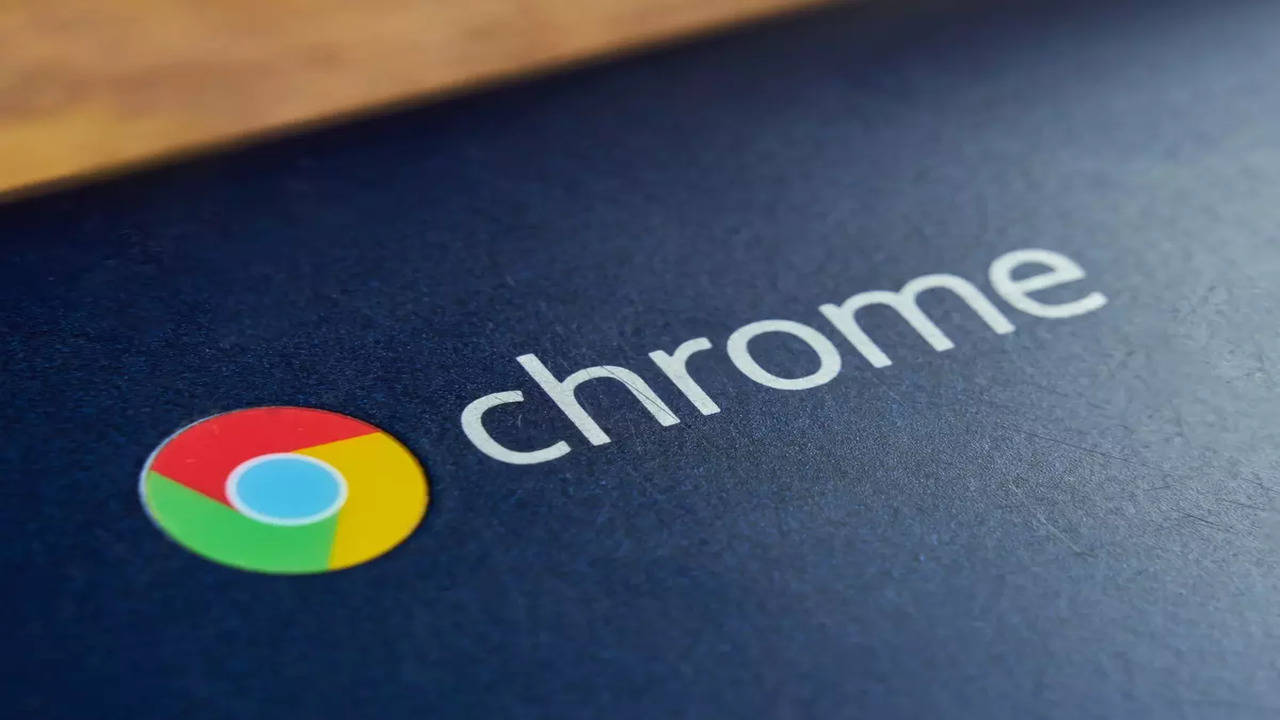
One of the ways Google has managed to ingrain itself into our lives is by making the majority of its products and services free of charge. The company does sell products and services that require a fee, such as Google One, but it looks like they'll be extending that to Chrome by introducing a paid version of the browser.
Before you get too upset, note that the current version of Chrome you're probably using right now will remain free. Instead, this paid version of Chrome, also known as Chrome Enterprise Premium, is entirely optional. You don't have to pay for it if you don't want to, but you might also want to pay for it if its additional features are appealing and could be of use to you.
According to Google, Chrome Enterprise Premium is more geared towards users who want advanced security features while they browse the web. For example, IT admins can create things like custom permissions. It also comes with automatic warnings on malware, additional protection against phishing, and AI powered security features.
This isn't to say that the current version of Chrome is "less" secure. It is still quite a secure browser with a ton of security features to protect users against online threats, but the paid version will offer more advanced security and malware screening tools that maybe enterprise users might appreciate. Chrome Enterprise Premium will be priced at $6 per user per month.

Should You Outsource AI Development: Pros and Cons
According to a recent study, 94% of tech firms rely on external providers when it comes to advancing their AI technology. Outsourcing has become a trend during the pandemic and doesn't show signs of stopping nowadays. This blog post sheds light on the pros and cons that outsourcing of artificial intelligence development carries for your tech company. So, whether you doubt whether external providers are the right choice to power your IT initiatives, this is your answer.
Pros of AI Development Outsourcing for Tech Companies
Sometimes, the best way to power your tech company is to look outside your organization, and outsourcing comes as a strategic move here. Let's take a look at the most sufficient advantages that they reap from outsourcing AI development.
Access to Vast Talent Pool
AI development outsourcing allows you to tap into skilled and experienced artificial intelligence developers regardless of their location. Unlike in-house hiring, you don't have to spend time and costs on filling the workforce shortages with talent from your location or searching for candidates willing to relocate. Outsourcing allows you to have the right expertise on board, bypassing geographical limitations and thus boosting the time-to-market speed.
Cost Savings
Apart from the variety of skilled workforce, AI development outsourcing helps to cut down on expenses related to hiring and training in-house teams. First, the outsourced team has all the required infrastructure and equipment for AI development. Second, outsourced teams allow tech companies to save on insurance, health care, travel, and other employee perks. Third, outsourcing allows for cutting down on budget by hiring contractors from countries with lower labor costs compared to Western world. Apparently, outsourcing AI app development allow tech companies to benefit from cost effective solutions without compromising on the quality of the final product.
Scalability Options
Just like any project, AI development can get unpredictable from time to time, and outsourcing has the "built-in" flexibility to address the changes. Depending on the project requirements, you can "fill the gap" in the development team with a lacking talent or scale down on the workforce that you don't require at the particular stage with no commitments involved.
Cons of Outsourcing of AI Development
Before outsourcing your AI initiatives, let's consider the most significant risks associated with trusting AI development to third-party contractors.
Data Security and Confidentiality Concerns
Sharing sensitive information with external providers may pose serious threats to the security of your organization. This may be a sad consequence of unreliable data protection measures and negligence of third-party contractors as well. Make sure the service provider is trustworthy and implements robust data protection measures in place.
Communication Challenges
These may be either cultural, language, or time zone barriers. Since effective communication is a key to project success, make sure to hire the team that not only speaks the language required but also understands your values and standards.
To sum up, many tech companies rely on external providers to advance and implement their AI initiatives. No weird, considering the cost savings, flexibility, and a vast talent pool that outsourcing grants. If you're a tech firm looking to reap the benefits of AI development outsourcing, S-Pro comes in as your reliable development partner. Their dedicated team of AI specialists uses cutting-edge algorithms and machine learning techniques to craft intelligent solutions that deliver tangible results to your tech company.

Are you ready to break free from the grip of Google services on your Android device? Whether you're concerned about privacy, want more control over your data, or simply prefer alternative options, it's entirely possible to use Android without relying on Google. In this blog post, I'll share some tips and strategies for navigating the Android ecosystem without Google services.
1. Choose a Google-Free Android Device
If you're in the market for a new Android device and want to avoid Google services from the get-go, consider purchasing a smartphone from manufacturers like Samsung, OnePlus, or Huawei. These OEMs offer Android devices with their own custom user interfaces and app stores. These devices often provide alternatives to Google services out of the box.
2. Opt for Open-Source Alternatives

Replace Google's proprietary apps with open-source alternatives available on alternative app stores like F-Droid or the Aurora Store. Here are some examples:
- Web Browser: Instead of Google Chrome, try Firefox, Brave, or DuckDuckGo Browser for privacy-focused browsing.
- Email: Use open-source email clients like K-9 Mail or FairEmail for managing your email accounts without relying on Gmail.
- Maps and Navigation: Replace Google Maps with alternatives like OpenStreetMap, Maps.me, or OsmAnd for offline maps and navigation.
- Search Engine: Switch to privacy-focused search engines like DuckDuckGo, StartPage, or Searx for internet searches without Google tracking.
- Cloud Storage: Opt for alternatives to Google Drive such as Nextcloud, Dropbox, or pCloud for storing and syncing your files in the cloud.
3. Secure Your Device
Ensure your device is secure by keeping it updated with the latest security patches and using security-focused apps and services. Consider installing a reputable antivirus app, enabling device encryption, and using a secure lock screen method like a PIN, pattern, or biometric authentication.
4. Manage App Permissions
Review and manage app permissions to control what data your apps can access. Go to Settings > Apps & Notifications > [App Name] > Permissions to view and adjust permissions for each installed app. Be cautious about granting unnecessary permissions that could compromise your privacy.
5. Disable Google Services and Apps
![]()
If your device came pre-installed with Google services and apps, you can disable or remove them to reduce Google's presence on your device. Go to Settings > Apps & Notifications > [Google App/Service] > Disable/Uninstall to disable or uninstall Google apps and services that you don't use.
6. Embrace Privacy-Enhancing Tools
Explore privacy-enhancing tools and services that complement your Android without Google experience. Use VPNs (Virtual Private Networks) to encrypt your internet traffic, employ ad blockers to reduce online tracking, and consider using privacy-focused messaging apps like Signal or Telegram instead of Google's messaging services.
Embrace Freedom and Privacy on Android
By following these tips and strategies, you can liberate yourself from the confines of Google services on your Android device and take control of your digital life. Whether you're concerned about privacy, want more freedom and choice, or simply prefer alternatives to Google, there are plenty of options available to customize your Android experience to suit your preferences. Embrace the freedom and privacy that come with using Android without Google services, and enjoy a more secure and personalized smartphone experience.

While it hasn't been officially unveiled (or even announced) by Sony at the moment, it looks like we now have a better look at the company's upcoming flagship, the Sony Xperia 1 VI thanks to a handful of photos online. The photos are based on design renders released by Android Headlines, in collaboration with @OnLeaks.
With that being said, the supposed design does resembles past Sony Xperia smartphones such as last year's Xperia 1 V, especially with the tall display, top and bottom bezels, and the triple-camera setup on the rear panel. There are rumors however that Sony might ditch the 21:9 aspect ratio that it often uses on its handsets, although there's no confirmation of this at the moment.

It's also predicted that the next Xperia flagship will retain a 6.5-inch display similar to its predecessor. Unlike other Android flagship phones though, the 1 VI will come with long-gone features such as a 3.5mm headphone jack, in addition to a microSD card slot. Other rumors claim that Sony will ditch the 4K display for a lower 2K resolution panel.
Not much else is known about the phone at this point, although it's probably safe to assume that it will launch with the Qualcomm Snapdragon 8 Gen 3 chip inside, given that it's the go-to SoC for a lot of Android brands this year.

Following some potential leaked specs of Xiaomi's first foldable flip phone, specs of the upcoming Xiaomi MIX Fold 4 have made their way online courtesy of the folks at Android Headlines. This is a small leak in which code in HyperOS have revealed the cameras of the handset.
According to the code, it references two telephoto cameras that will be part of the phone. This includes a 60MP 2x camera and a 10MP 5x periscope lens. Xiaomi won't be the first to launch a foldable with multiple telephoto cameras. Vivo has already done that with the X Fold and X Fold Plus, but it will certainly help Xiaomi stand out from the competition.
This includes Samsung where the cameras on the company's foldables are questionable compared to their flagship devices. Also, if the rumors are accurate, the Samsung Galaxy Z Fold 6 won't see any camera upgrades, giving Xiaomi a slight edge for those who care a lot about the camera quality on their phones.
Apart from the cameras, not much else is known about the MIX Fold 4. It will most likely use a Qualcomm Snapdragon 8 Gen 3 chipset. It could also support 100W charging with a 5,000mAh battery. The bad news is that we heard it could be exclusive to China.
© 2023 YouMobile Inc. All rights reserved






